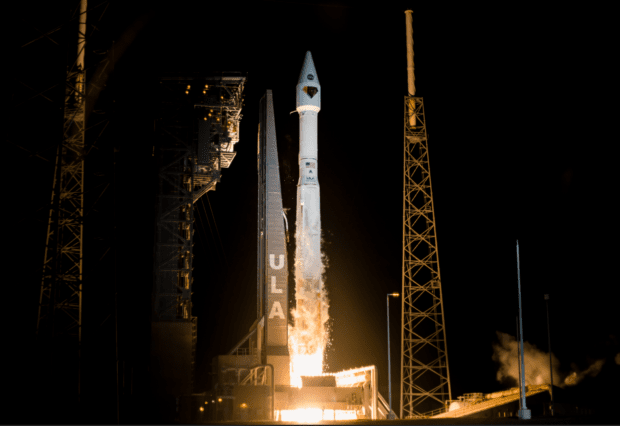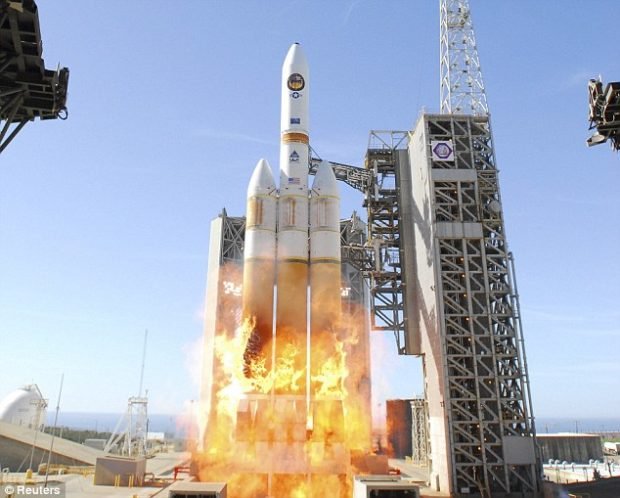United Launch Alliance Successfully Launches Exploration Mission for NASA
Cape Canaveral Space Force Station, Fla., (Oct. 16, 2021) – A United Launch Alliance (ULA) Atlas V rocket carrying the Lucy mission for NASA lifted off on Oct. 16 at 5:34 a.m. EDT from Space Launch Complex-41 at Cape Canaveral Space Force Station. To date ULA has launched 146 times with 100 percent mission success.
“We are honored to partner with NASA to launch this one-of-a-kind mission and are proud to add the Lucy mission to the Trojan Asteroids to our list of exploration launch successes,” said Gary Wentz, ULA vice president of Government and Commercial Programs. “We are very proud to launch this spacecraft on its historic 12-year journey to eight different asteroids, and thank our mission partners for their teamwork.”
Lucy is the first space mission to study the Trojan astroids. The mission takes its name from the fossilized human ancestor (called “Lucy” by her discoverers) whose skeleton provided unique insight into humanity’s evolution. Likewise, the Lucy mission will revolutionize our knowledge of planetary origins and the formation of the solar system.
Time capsules from the birth of our Solar System more than 4 billion years ago, the swarms of Trojan asteroids associated with Jupiter are thought to be remnants of the primordial material that formed the outer planets. The Trojans orbit the Sun in two loose groups, with one group leading ahead of Jupiter in its path, the other trailing behind. Clustered around the two Lagrange points equidistant from the Sun and Jupiter, the Trojans are stabilized by the Sun and its largest planet in a gravitational balancing act. These primitive bodies hold vital clues to deciphering the history of the solar system. – NASA.gov
The Atlas V delivered the Lucy spacecraft into an interplanetary trajectory. The mission launched on an Atlas V 401 configuration rocket that included a 14-ft (4-m) large payload fairing (LPF). The Atlas booster was powered by the RD AMROSS RD-180 engine. Aerojet Rocketdyne provided the RL10C-1 engine for the Centaur upper stage.
With boosts from Earth’s gravity, Lucy will complete a 12-year journey to eight different asteroids — a Main Belt asteroid and seven Trojans, four of which are members of “two-for-the-price-of-one” binary systems. Lucy’s complex path will take it to both clusters of Trojans and give us our first close-up view of all three major types of bodies in the swarms (so-called C-, P- and D-types).
This was the 89th launch of an Atlas V rocket and 21st mission launched on an Atlas V in partnership with NASA’s Launch Services Program (LSP), following the launch of Landsat 9 from Vandenberg Space Force Base last month. ULA’s next launch is STP-3 for the U.S. Space Force, planned for Nov. 22, 2021, from Cape Canaveral Space Force Station, Florida.
Source: United Launch Alliance
Content created by Conservative Daily News is available for re-publication without charge under the Creative Commons license. Visit our syndication page for details.





